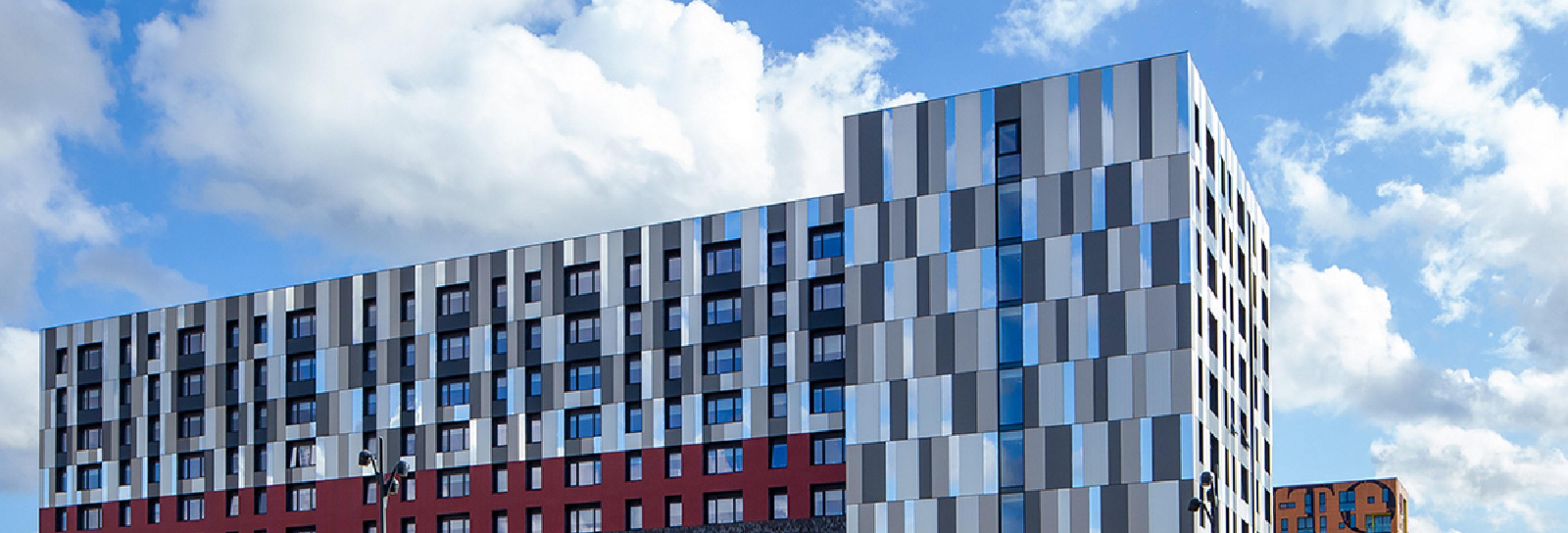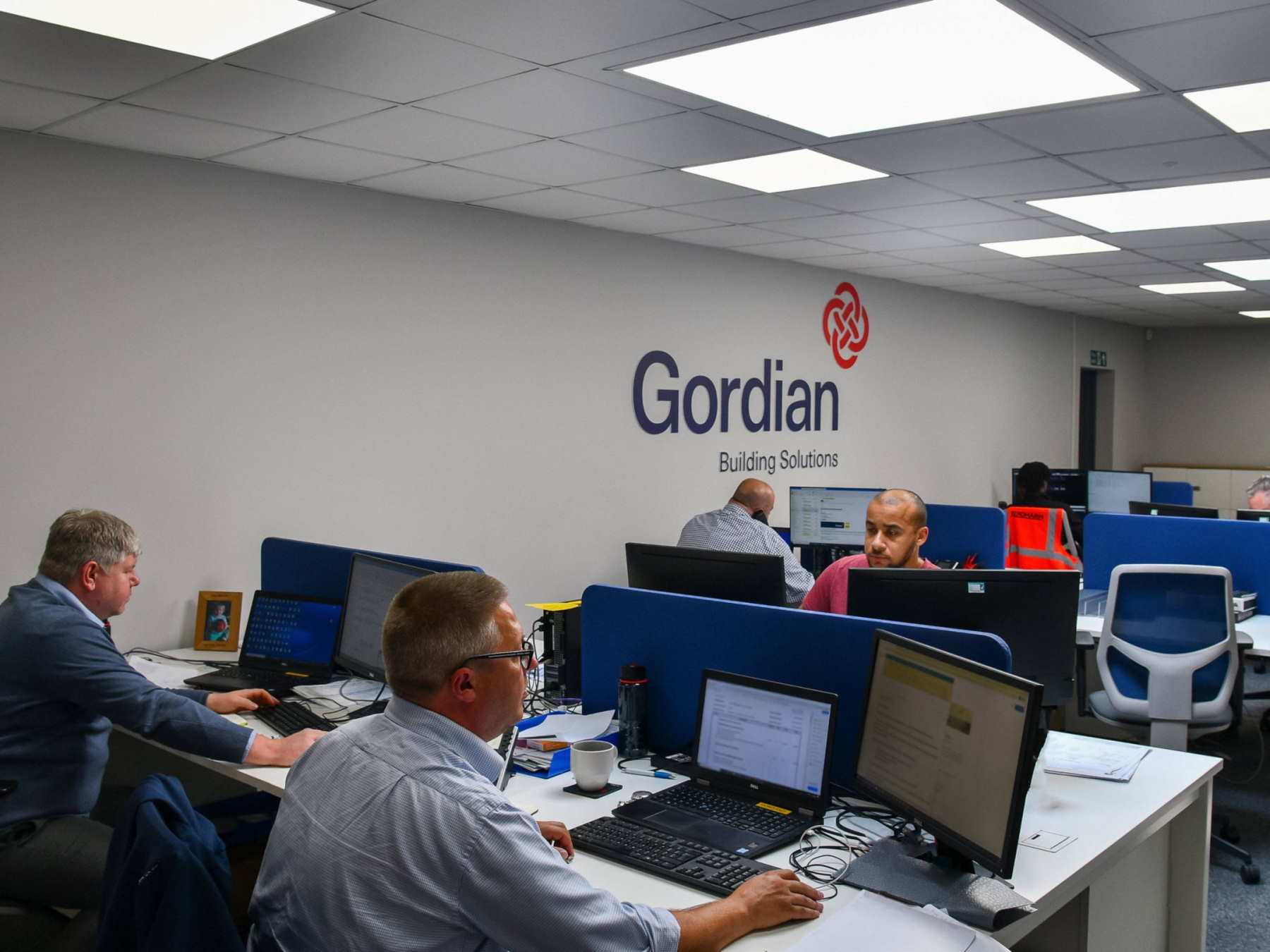Need Advice When Recladding A Building
Recladding a building is carried out for many reasons. Sometimes the external façade is updated due to a refurbishment or a change of use, other times it can be because the panels or facade has deteriorated and therefore needs to be removed, remediated and replaced.
Many architects and developers choose to reclad an existing building rather than demolish and rebuild it because it as a cost-effective and less carbon intensive way of making it look and – with the addition of insulation – perform like new.
Since the Grenfell Tower fire in June 2017, a large number of high rise and tower block projects have also occurred because local authorities and building owners identified a need to replace façade materials that do not meet the latest fire safety regulations introduced following the disaster.
How does fire rating affect my cladding project?
The Hackitt Report, which was released in May 2018 and carried out after the Grenfell disaster, found that the current system of building regulations and fire safety was not fit for purpose and that a culture change was required to support the delivery of buildings that are safe. As a result, in December 2018 the Government introduced a ban on combustible cladding materials, including Aluminium Composite Material (ACM).
The legislation, known as The Cladding Regulations states; “building work shall be carried out so that materials that become part of an external wall, or specified attachment, of a relevant building are of European Classification A2-s1, d0 or A1, classified in accordance with BS EN 13501-1:2007+A1:2009 entitled “Fire classification of construction products and building elements. Classification using test data from reaction to fire tests” (ISBN 978 0 580 59861 6) published by the British Standards Institution on 30th March 2007 and amended in November 2009” (Regulation 2(5)).
Following this, new legislation was introduced that required building owners of all multi-storey and multi-occupied residential buildings to undertake investigations into the external wall systems and fire doors to determine whether they represent a risk to the health and safety of residents. As such, building owners that find their structures contain combustible materials must “remediate” (remove or replace) them as soon as possible, including unsafe cladding from high-rise residential buildings.
In addition, this ruling, known as ‘Advice for Building Owners of Multi-storey, Multi-occupied Residential Buildings’, also means that any new developments now must only feature external panels that have a minimum European Classification of A2-s1, d0.
It is therefore important that building owners, specifiers and installers are aware of the fire performance of the cladding used on both existing and new projects and what is being used to replace the panels when existing cladding is being removed. They need to determine whether the replacement façade materials meet these latest fire safety requirements set out in the new legislation (for more information on this, take a look at our Fire Safety Performance page).
To help make this part of the project easier for our customers, at Gordian Building Solutions we work alongside reputable and leading manufacturers such as Proteus Facades, Equitone, James Hardie, Rockpanel, Cembrit and Valcan to ensure all our cladding materials meet a minimum A2-s1, d0 fire rating when working on new or existing residential building facades.
We also make sure that we have access to the cladding manufacturer’s classification report and Declaration of Performance certificates (where required), which we can pass on to our customers to log as part of their project report if needed.
In addition, we are aware of how quickly building safety requirements and standards change, which is why our team are always keeping up to date with the latest industry developments and can work closely with our customers to advise on the most suitable materials for your project.
What about the aesthetics?
At Gordian Building Solutions we also know that, as well as meeting building and fire safety regulations, the visual impact of a façade is extremely important. As such, we offer an extensive choice of cladding options that provide both a minimum A2 fire rating, extreme durability and unlimited creative opportunities for designers and installers to produce eye-catching facades. All of which are suitable for use in all types of construction projects including residential, commercial, public and private sector buildings over 18m height.
We also offer our customers a bespoke in-house CNC fabrication service, meaning all fire rated, decorative cladding panels arrive cut to size and ready to install. This, alongside a nationwide distribution and sales network, means our customers can benefit from fewer deliveries, which are made direct to site, reduced installation time and less waste.




